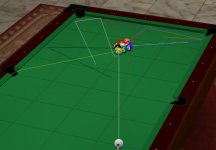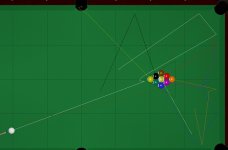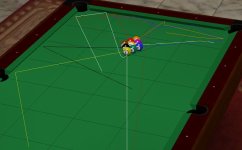I've apparently and unintenionally stepped on someone's toes in this thread. I guess it's my bad.
I was just addressing the shot and table layout displayed in the original post and how it appears to be a bad decision to shoot either of those two balls in a real game of one pocket with no intent to knock the game.
Don't get so uptight about what other people say John.
That goes for you too. You weren't just addressing the table layout Joey, you were knocking the whole idea behind the reason for posting the thread.
It's not that you stepped on my toes it's that you don't get the concept. It's not to make people run out and play bad one pocket or make stupid decisions when they play in real life.
Instead it's to just show that a game can also be used as a training tool to stimulate the imagination which can then be taken to the table and practiced to see what's practical and what's not.
For me the absolute magic in one pocket is finding and shooting the creative shots which don't come up in other games. It's figuring out the non-obvious shots and mastering them to the point that they become deadly weapons. Weapons that may not come up but once a year but when they are needed you have it available. That's why I love one pocket. Not because I can shoot the boring standard shots.
If you watch any of the top one pocket players you will see a LOT of shots that they play which the amateurs do not even try. Why don't they try them? I think it's because they do not know the shots and because if they do know them they haven't practiced them.
For example Scott Frost kick banks balls ALL THE TIME. I would bet HUGE RIDICULOUS MONEY that you won't find two good amateur one pocket players who shoot as many kick bank shots in a month as Scott Frost does in one long session. IF ANY. And then when you have lost money to me on that bet you can bet on the success rate of the shots that the amateurs did shoot vs. Scott's.
Is Scott superhuman? No, he isn't. He simply made a choice to learn HOW to shoot those shots and his choice pays off with an increased arsenal of available shots. Unlike Scott I don't have the ability to spend all day at the pool room working on my game. So MAYBE it's good for me to spend some time using VP playing around with the kick-banks I see him play so I can kind of wrap my mind around them so as to have more effective practice time on the real table.
Just my opinion, now get off my toes because I can't shoot with you there.


